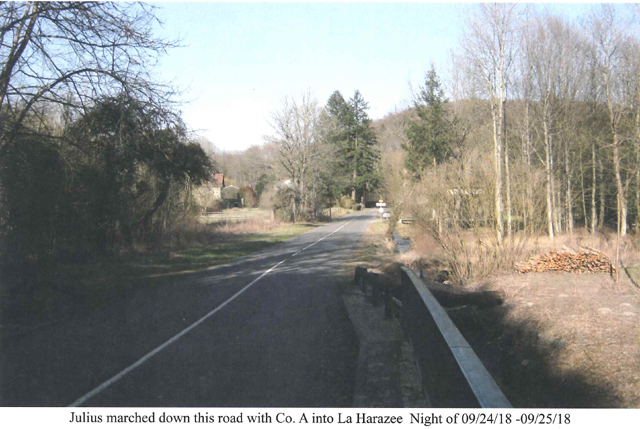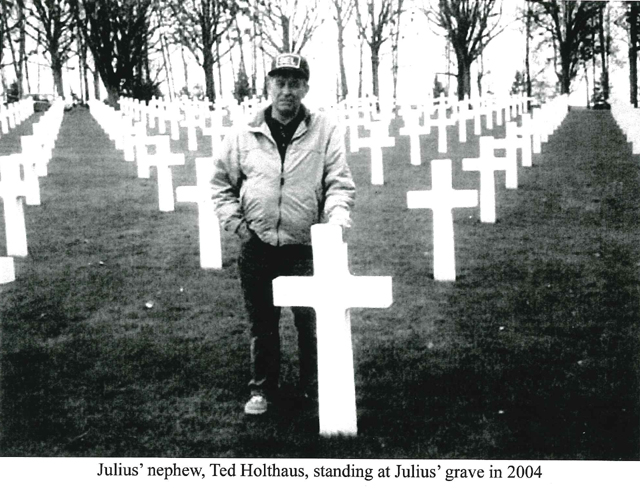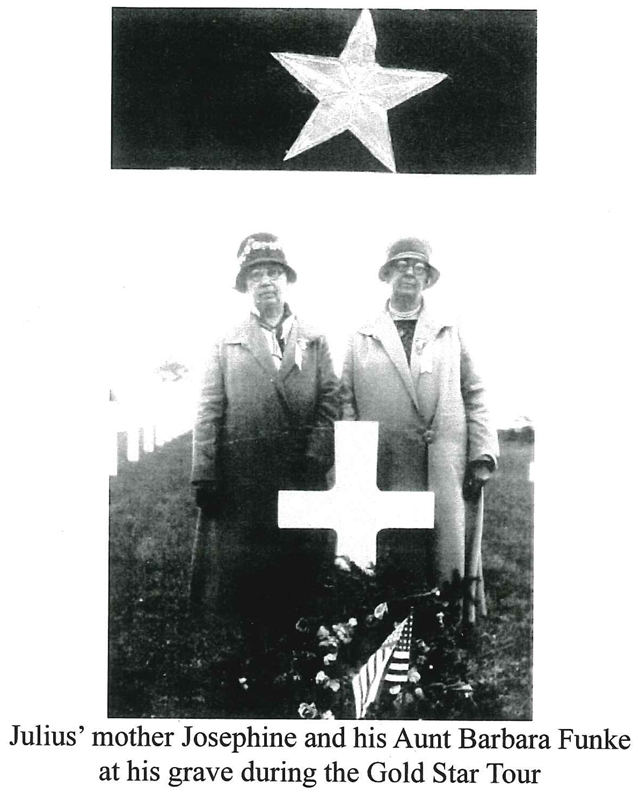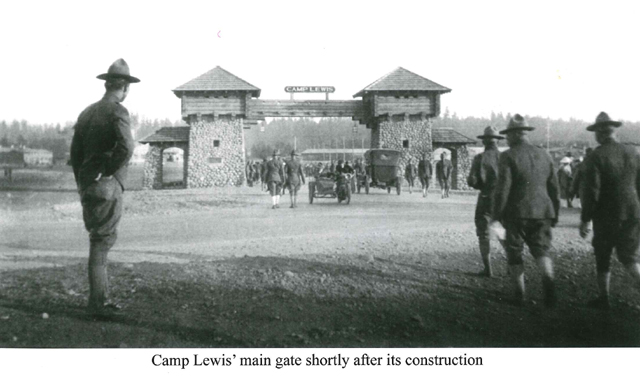| The
Julius Holthaus story
Julius was born outside of Festina in Northeastern Iowa in 1895. In 1914 his parents and his eight siblings moved their possessions to Cottonwood, Idaho. When Archduke Ferdinand and his wife Sophia were assassinated in Sarajevo, Serbia, on June 28 of that year, nothing was mentioned of the event in small town newspapers and which was eventually going to touch the lives of so many Americans. It was exactly four years later that Julius shipped out from Cottonwood and then Grangeville, Idaho, after a very large send off by the local populace and special guests. He was one of 98 from Idaho County to be shipped to Camp Lewis, Washington for “training.” After the initial medical examinations and clothing issue, he was shipped to Camp Kearney, California, for some additional clothing and incorporated into the 40th Division. After a boring and exhausting journey to New Jersey, he eventually boarded the White Star ocean liner, “Olympic.” This was the sister ship of “Titanic” and “Brittanic.” Although a luxury liner in peace time, she had been stripped of her amenities for the wartime trip across the north Atlantic. He disembarked at South Hampton, England, and the next day took a smaller ship to France. Julius was slowly moving toward the front with the aid of the French railroad. Finally, the last miles of his odyssey were completed by marching through the water logged roads of mud to La Harazée, France. He slept the daylight hours of September 25, 1918, in some crude rock shelters carved out of rock by the French so that the German observation aircraft would not spot the buildup of AEF forces in the Argonne region. My quest to find the true story of Julius Holthaus’ life and his death in World War One started when I was a mere eight years old. My family was looking through old photos of the “dearly departed” when Julius’ photo came up. There was just a simple statement, “That is Julius; he died in the war.” This piqued by interest and, in 1997 while at the American Cemetery at Belleau Wood, France, I retrieved his unit, rank, and presumed date of death (his date of death was listed as October 1 – which is wrong!). Thus I began the search for more information. This led me to the National Archives in Maryland, the Military History Institute in Carlisle, PA, various libraries, endless searches through newspapers of the war period, and several trips to France. Now I stood in front of the old German trench back in the Argonne Forest still trying to come to the end of my search. We found German and French cartridge cases fired during the opening phase of the war, pieces of artillery fuses, and a rusted shovel used to dig this trench. In front of this forgotten monument to mankind’s unkindness to one another were picket stakes still standing where they were placed in 1918 (these were used to hold barbed wire to stem any enemy onslaught directed against their redoubt). As we moved above the trench where Julius and four of his comrades were killed, we found three 4-round clips of U.S. ammunition made by Remington Arms in 1917. A check of the GPS and grid coordinates on original French and German maps of the war verified that within a few yards of this spot is where Julius died from one bullet wound. This fatal bullet is still imprinted on the diary that he carried in his left shirt pocket. Finally, I had come to the end of my quest. From the home in which he was born in Iowa to his family’s farm outside of Cottonwood, Idaho, to his grave in the American Cemetery, and now the spot where he died. Who would have ever known that a photo that I saw as a young lad would lead me to this final rendezvous with destiny? As said when Abraham Lincoln died, “He now belongs to the ages.” He was one of the 26,277 that died in the battle of the Meuse-Argonne, which lasted 47 days, one of the 1,017 men killed in the 77th Infantry Division in the Argonne Forest, one of the seven killed who left on the train to Camp Lewis on June 28, 1918! Like so many other soldiers in this late date in the war, he was completely untrained and had never fired one shot in training. One sergeant charged five francs to show the replacements in the 308th regiment how to load their M-1917 rifles – the day before the battle. Even those who were “trained” were not properly trained in-depth to handle the new type of warfare that was unfolding in Europe; tanks, massed artillery, poison gas, aircraft and machine guns. Julius’ cousin from Cottonwood, Hugo Funke, died the night before the war ended. He was with the engineers of the 2nd Infantry Division. He died putting a foot bridge over the Meuse River so that the Marines could charge into German occupied territory. Another cousin, Hugo Untereiner, was in Julius’ regiment in H company and lived through the Battle of the Lost Battalion. He was from Dimrock, South Dakota, and left the battle unscathed. I have visited the site where Hugo Funke died and where Hugo Untereiner huddled in his foxhole on the slopes of Charlevaux ravine. Needless to say, I was deeply moved. For what did you die, Julius? Was it to save the world for democracy as state by President Woodrow Wilson when so many injustices were commonplace in the United States among the allies? Did he die in the war to end all wars? This can be answered by the sound of the jackboots marching over the graves of the World War One dead as Germany invades France in 1940! The complete story of Clyde Cremer’s research can be found in his 436 page book, The Life and Times of a World War One Soldier – The Julius Holthaus Story. The book can be ordered from iUniverse.com, Amazon.com or from Barnes and Noble. It is not just the story of this one hapless soul from Cottonwood, but also the sights and remembrances of other Cottonwood soldiers and AEF soldiers in the Great War. 



Along with a copy of his book and the accompanying article, Clyde Creamer sent several photos from his book. We plan to share some of the others in future Chronicles. |
|